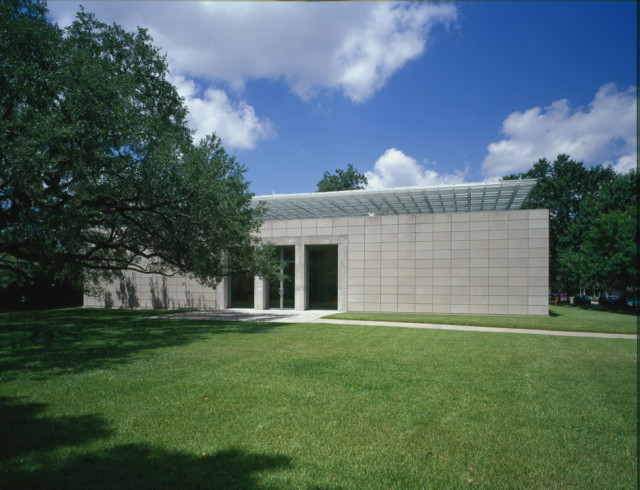A Man and His Gallery

"Untitled (Say Goodbye, Catullus, to the Shores of Asia Minor)" by Cy Twombly in the Cy Twombly Gallery
Image: T. Matsumoto
On May 21, Yale University Press will publish The Cy Twombly Gallery, the first book devoted to the Renzo Piano–designed building on the Menil Collection campus in Montrose. Featuring lavish photographs of the gallery and its permanent installation of works by Twombly (1928–2011), the book also includes two highly personal essays by Carol Mancusi-Ungaro, a former Menil conservator, and Paul Winkler, the former director of the Menil Collection. Houstonia recently spoke by phone with Winkler, who now divides his time between Houston and New Mexico.

The Cy Twombly Gallery
Image: George Hixson
Houstonia: The Cy Twombly Gallery opened in 1995. Why did it take so long for this book to come out?
Paul Winkler: I started planning the book when I was director of the Menil, and I kept pushing for it over the years, even after I left. I wanted to do it when Cy was still alive, because Cy loved to lay out books. After Cy died and the Twombly Foundation was founded, [the book] was the first thing they wanted to do.
H: Why was the book so important to you?
PW: The Twombly Gallery is a special place—it’s perhaps the best of the single-artist museums anywhere. It shows what happens when people trust each other and don’t have ulterior motives to their actions. [Twombly and I] just developed a trust and a friendship.
H: In your introduction, you describe your long friendship with Cy. How did that develop?
PW: I’m a fairly easy-going personality, and I’m from the South, and Cy was very much the same way [Twombly was born in Virginia]. We just started going down that road [with the gallery], and our friendship grew. His understanding of what our intentions were grew, and everything was just simpatico, as you would say. He developed a good relationship with Carol Mancusi-Ungaro, even though he disliked conservators.
H: The first time you tried to arrange an exhibition of Twombly’s works at the Menil, it fell through. What induced Twombly to change his mind and start working with the Menil?
PW: The Menil was an extremely special place, very dedicated to working with artists. And Cy was a very reclusive person in a way. He protected his life tremendously, the life he wanted to live. While he was part of the art world he was never really sucked into the art world—he kept it at arm’s length. He didn’t like to think about things or spend time on things that kept him from what he really wanted to do, which was to make art, to travel, to read, and those sorts of things. Whenever you organized an exhibition with Cy, he wanted to see the space first. He was just a physical person. And I think once the Menil Collection was finally built, and he got a report on it, he was ready to go. Of course, we also had the advantage of having a relationship with the Dia Art Foundation [which owns a large collection of Twombly’s work].
H: You say in the introduction that you didn’t think Piano would accept the commission because it was such a small project.
PW: Renzo was doing this huge airport in Japan at the time [the Kansai International Airport], which was a major project. But the Menil was an extremely important building for Renzo’s career, and that’s why I think he agreed to do the Twombly Gallery. The building’s finesse comes from Renzo, from his lighting system. And the light is what makes the gallery work. Jim Turrell once said it was the finest gallery he’d ever seen for art because of the light.
H: What would Twombly have thought of the book?
PW: I think he would have liked it, although he never read articles about himself. He didn’t need any convincing—he loved his work, and he knew it was strong. And, you know, he had the most incredible last 20 years of his life, just reinventing the way he painted.
H: What about the gallery? Obviously, Twombly must have been pleased with it.
PW: I think he got a lot of joy out of the building, in planning it and placing the work there. A lot of people don’t know this, but the Menil never gave Cy a penny—he donated all the works, except for the pieces at Dia. Even at that time, [the works’] values were phenomenal—it was the largest gift the Menil had ever gotten. But that wasn’t the point. As an artist, he was interested in preserving his works in the best way. Think about it—how often do you see two Twomblys together? You always see him next to a Rauschenberg or something. To be able to immerse yourself in a single artist’s works is one of the most instructive things you can do. If every museum would just commit themselves to one living artist, and do something similar, it would be phenomenal—you could go around the country from city to city. Denver just did it with the Clyfford Still Museum [which opened in 2011].
